Published
- 11 min read
DigitalOcean vs AWS in 2025: Which Cloud Platform Is Right for You?
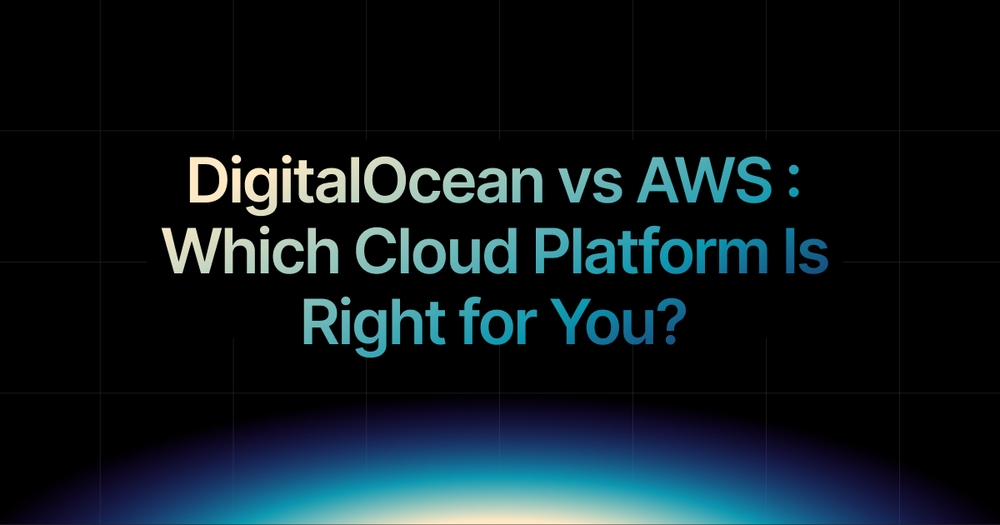
DigitalOcean has long been a favorite for developers: simple, affordable, and quick to get started. But as apps grow more complex and microservices become the norm, many teams are realizing that basic VPS hosting doesn’t scale with modern demands.
In contrast, AWS offers everything: power, scale, and global infrastructure. But it also comes with a steep learning curve and significant DevOps overhead. Most teams use only a fraction of what AWS provides and still pay a premium for that complexity.
If you’re caught in the middle, needing the simplicity of DigitalOcean along with the power and flexibility of AWS, there’s now a smarter option: Kuberns.
In this post, we’ll compare DigitalOcean vs AWS through a 2025 lens, explore the pros and cons of each, and explain why more teams are switching to Kuberns to deploy faster, reduce cloud costs, and eliminate DevOps headaches.
For a deeper dive into automated deployment and cloud savings, read our complete guide on modern deployment automation.
DigitalOcean: Easy to Start, Challenging to Scale
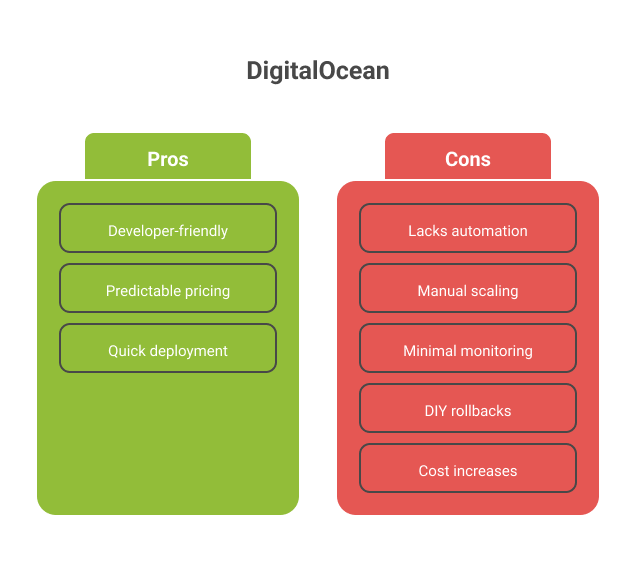 Why teams love it: DigitalOcean is known for its developer-friendly experience. It offers a clean, intuitive interface, predictable flat-rate pricing, and fast provisioning through Droplets. For many developers, especially indie hackers, students, and early-stage startups, it’s a great first step into the cloud. Spinning up a server or deploying a static site can be done in minutes, with minimal DevOps knowledge required.
Why teams love it: DigitalOcean is known for its developer-friendly experience. It offers a clean, intuitive interface, predictable flat-rate pricing, and fast provisioning through Droplets. For many developers, especially indie hackers, students, and early-stage startups, it’s a great first step into the cloud. Spinning up a server or deploying a static site can be done in minutes, with minimal DevOps knowledge required.
Where it falls short in 2025: While DigitalOcean remains an excellent option for launching small apps quickly, it shows its limitations as teams grow or projects mature:
- There’s no native CI/CD or deployment automation
- Managing microservices requires manual setup or external tooling
- Scaling is manual and lacks intelligent resource optimization
- Monitoring and logging are minimal unless third-party services are integrated
- Rollbacks and environment separation (like staging vs production) require DIY scripting or external tools
- Total cost of ownership increases as more add-ons are needed to support production workflows
Verdict: Verdict: DigitalOcean works well for MVPs, prototypes, and low-traffic apps. However, for teams building modern, service-oriented applications or looking to automate their pipeline, it lacks the tooling and flexibility required for long-term growth. At that point, developers often find themselves piecing together tools and losing the simplicity that drew them to DigitalOcean in the first place.
👉 Looking for other options? Explore the Best DigitalOcean Alternatives for 2025
AWS: Full Control, But High Complexity
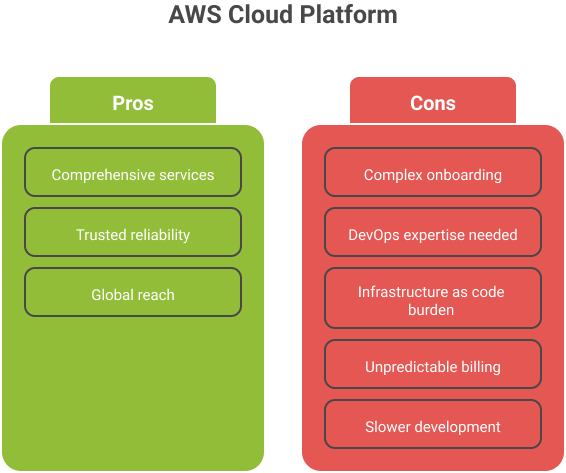 Why teams consider it: Amazon Web Services (AWS) is the most comprehensive cloud platform on the market. With services like EC2 for virtual machines, Lambda for serverless functions, RDS for managed databases, and CloudFront for global content delivery, AWS gives you the tools to build, scale, and manage virtually any type of application. Its infrastructure powers some of the largest companies in the world, and it’s trusted for its reliability, security, and global reach.
Why teams consider it: Amazon Web Services (AWS) is the most comprehensive cloud platform on the market. With services like EC2 for virtual machines, Lambda for serverless functions, RDS for managed databases, and CloudFront for global content delivery, AWS gives you the tools to build, scale, and manage virtually any type of application. Its infrastructure powers some of the largest companies in the world, and it’s trusted for its reliability, security, and global reach.
What makes it hard to adopt: Despite its power, AWS presents significant challenges for many developers and growing teams:
- Onboarding and configuration are complex: Getting started with AWS often means navigating dozens of service options, configuration screens, and permission settings. Setting up even a simple web app can involve configuring VPCs, IAM roles, security groups, and more.
- Requires strong DevOps knowledge: Unlike platforms that guide you through deployments, AWS expects you to know or learn how to configure and manage infrastructure at a detailed level.
- Infrastructure as code adds to the burden: Using tools like CloudFormation or writing YAML files to define infrastructure is powerful, but time-consuming and error-prone, especially for teams without dedicated DevOps engineers.
- Unpredictable billing: AWS pricing is usage-based and varies across services, which can result in surprising bills if you’re not actively monitoring your resource consumption.
- Slower development cycles for small teams: Building and deploying on AWS typically takes longer due to the setup complexity, which can slow down product development for startups or lean engineering teams.
Verdict: AWS is a powerful and flexible platform, best suited for enterprises or advanced teams that need deep control over their infrastructure. But for many startups, SaaS builders, and fast-moving dev teams, the overhead is too high. Without automation or abstraction, AWS becomes a drain on time, resources, and focus especially when faster, more developer-friendly alternatives exist.
The Real Problem: Most Teams Just Want to Deploy Without the Drama
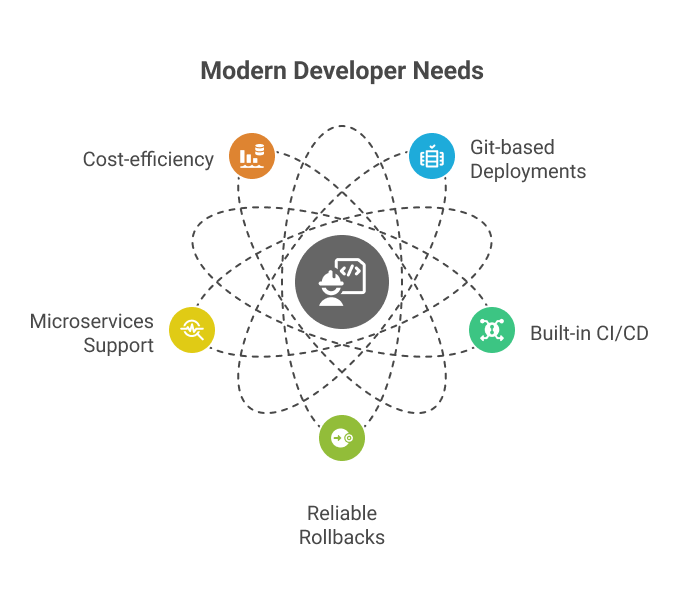 In 2025, most developers aren’t asking for dozens of cloud services or endless configuration files. They just want a way to ship features faster, without worrying about infrastructure.
In 2025, most developers aren’t asking for dozens of cloud services or endless configuration files. They just want a way to ship features faster, without worrying about infrastructure.
Whether you’re working on a SaaS product, managing a microservices architecture, or building a side project, the needs are remarkably consistent:
- Git-based deployments that just work: Teams want to push code to GitHub and see it go live automatically. No manual uploads, no script maintenance. Just clean, version-controlled deploys.
- Built-in CI/CD without complexity: Continuous Integration and Deployment should be a default feature, not something you glue together with custom YAML files or third-party tools.
- Reliable rollbacks and real-time monitoring: If something breaks, it should be easy to identify the issue, roll back instantly, and restore stability without waiting on DevOps.
- Support for microservices and background processes: Modern apps often involve multiple services, workers, schedulers, and APIs. Teams need a platform that handles these natively, not one that forces them to build and manage orchestration layers manually.
- Cost-efficiency without babysitting infrastructure: No one wants to overpay for idle servers or spend hours tweaking instance sizes. Smart resource management and automatic scaling should be built in.
The issue? Neither DigitalOcean nor AWS gives you all of this out of the box. DigitalOcean is too minimal, and AWS is too manual. That’s why more developers are exploring newer platforms that blend automation, performance, and simplicity into one experience.
Kuberns: The Best of AWS and DigitalOcean, Without the Complexity
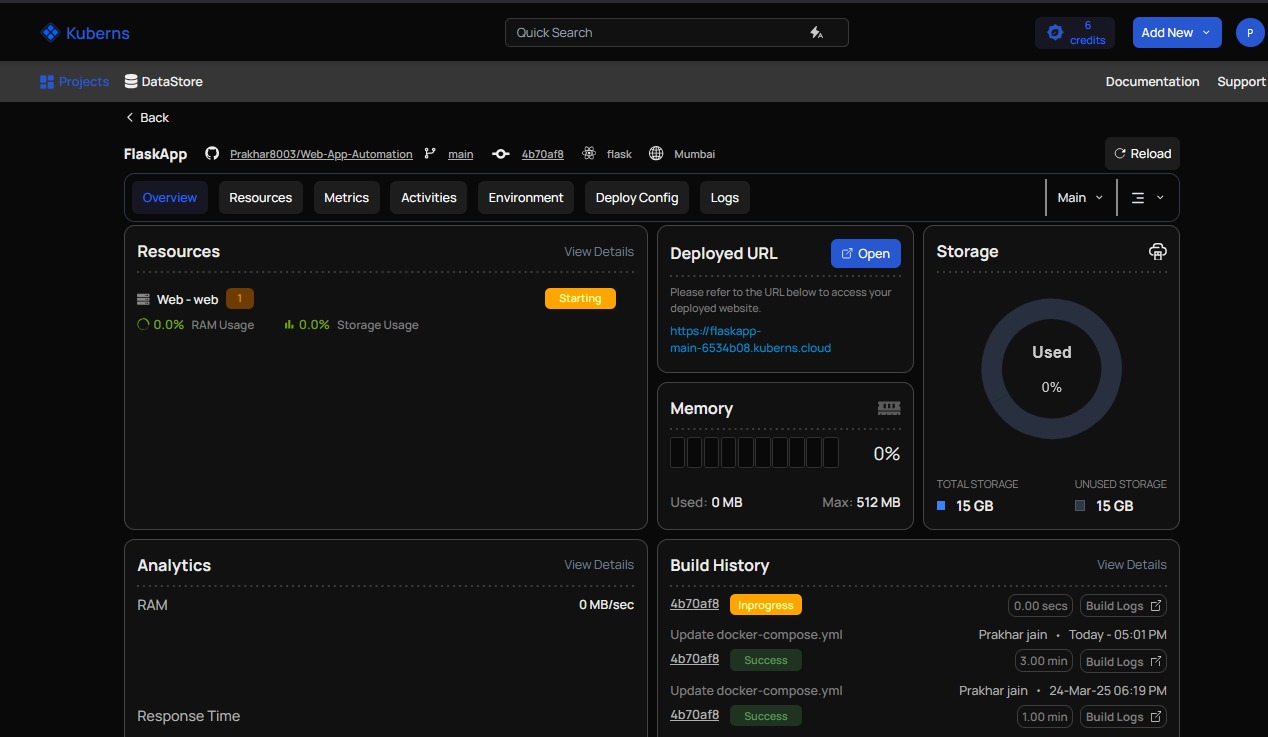 Kuberns is a modern deployment platform that blends the simplicity of DigitalOcean with the scale and reliability of AWS, without requiring developers to manage infrastructure or write complex configuration files.
Kuberns is a modern deployment platform that blends the simplicity of DigitalOcean with the scale and reliability of AWS, without requiring developers to manage infrastructure or write complex configuration files.
It runs on AWS infrastructure under the hood, but everything from CI/CD to scaling and monitoring is automated for you. That means you get production-grade deployment features without hiring a DevOps team or piecing together third-party tools.
Here’s what makes Kuberns different:
- Zero-config CI/CD: You can connect your GitHub repository, push your code, and Kuberns takes care of the entire deployment flow. There’s no need to write YAML files or configure webhooks manually. If you’re curious how this works, check out our GitHub auto-deploy guide.
- Built-in rollback, logs, and monitoring: From day one, your app has built-in observability. Logs are structured and searchable, rollbacks take one click, and real-time monitoring helps you spot issues fast without any extra setup required.
- Microservices-ready architecture: Whether you’re deploying a single app or multiple interconnected services, Kuberns supports independent scaling and service orchestration out of the box. It also works just as well for monoliths and background jobs.
- Environment management made easy: Create staging, production, or custom environments in just a few clicks. There’s no need to glue together environments manually or set up separate pipelines for each.
- Built-in cloud cost savings: Since Kuberns runs on AWS and optimizes infrastructure usage behind the scenes, you can save up to 40% on your AWS bill while paying zero platform fees.
Kuberns is built for startups, product teams, and developers who want to deploy with confidence and scale without the overhead.
Why More Developers Are Choosing Kuberns
In 2025, the best cloud platform isn’t the one with the longest list of services. It’s the one that helps you launch faster, scale effortlessly, and manage less infrastructure.
Kuberns was designed to make modern deployment easier for real teams building real products. Instead of forcing you to piece together CI/CD pipelines, monitoring tools, scaling policies, and YAML configs, it gives you everything out of the box.
Here’s what makes Kuberns the smarter choice:
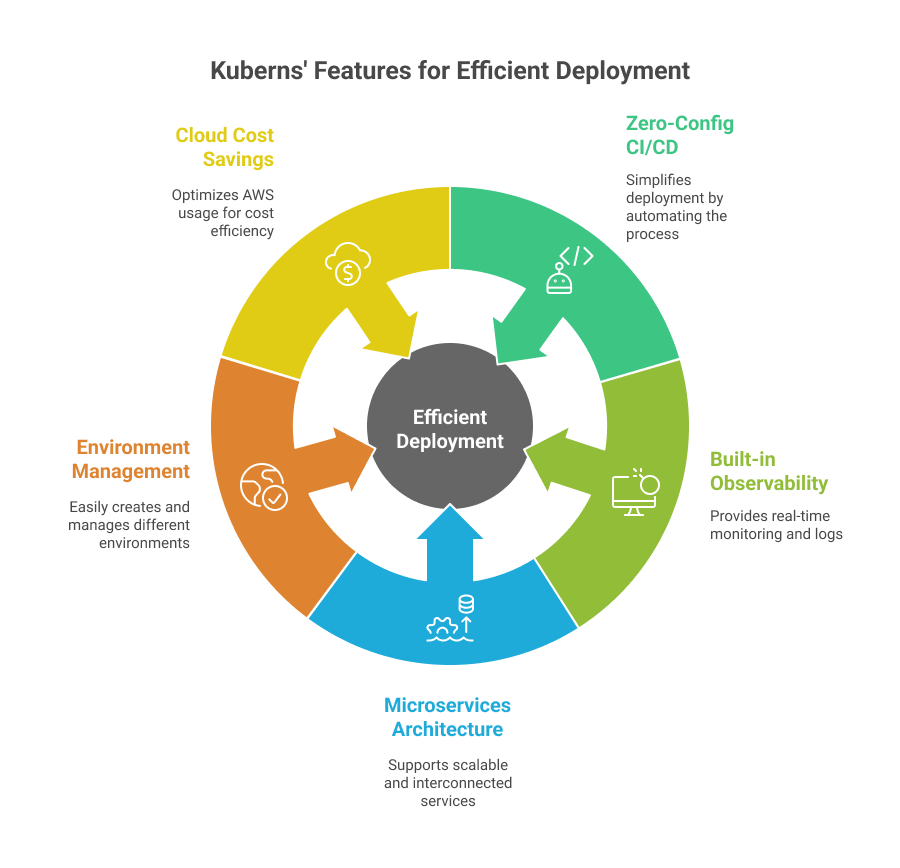
- CI/CD is built-in and ready to go: Just connect your Git repo. No YAML, no scripts, no manual setup. Deployments happen automatically, and rollbacks are one click away.
- Designed for microservices: Kuberns supports multiple services and background jobs, allowing you to scale them independently. You don’t need to architect complex orchestration yourself.
- Significant AWS cost savings: Since Kuberns runs on optimized AWS infrastructure, teams typically save up to 40% on cloud bills without sacrificing performance.
- Zero platform fees: You only pay for the infrastructure, not the deployment platform. This keeps things predictable and budget-friendly.
- No DevOps bottlenecks: Everything from environment setup to monitoring is automated, freeing up your developers to focus on product, not infrastructure.
We built Kuberns to solve the exact deployment challenges that teams face on platforms like DigitalOcean and AWS.
Try Kuberns free and see how it simplifies your entire deployment workflow.

Frequently Asked Questions
Q. Is Kuberns a replacement for both DigitalOcean and AWS?
A. Yes, Kuberns combines the ease of DigitalOcean with the scale and reliability of AWS, without the complexity of managing infrastructure or setting up DevOps pipelines.
Q. Can I deploy apps without writing YAML or using CI/CD scripts?
A. Absolutely. Kuberns handles the entire deployment flow from your Git repo, with no YAML, no scripts, and no manual setup required.
Q. Does Kuberns support microservices and background jobs?
A. Yes, you can deploy multiple services independently, including background workers, cron jobs, and APIs, with full support for scaling and monitoring.
Q. What kind of apps can I deploy with Kuberns?
A. Kuberns supports web apps, APIs, static sites, backend workers, and full-stack projects built with popular frameworks like Flask, Django, and Node.js.
Q. Do I need AWS or Kubernetes experience to use Kuberns?
A. No. Kuberns abstracts the complexity for you. You don’t need to manage AWS accounts, write Kubernetes config files, or set up infrastructure manually.
Q. Can I create staging and production environments easily?
A. Yes, Kuberns lets you set up multiple environments with isolated deploys and logs in just a few clicks—no need to configure them manually.
Q. How does Kuberns help save up to 40% on AWS costs?
A. Kuberns hosts apps on its own optimized AWS infrastructure and passes savings directly to users. There are no platform fees or markups, leading to up to 40% lower cloud bills.
Q. Where can I learn more about how Kuberns works?
A. You can read our full guide on what Kuberns is and how it simplifies app deployment.